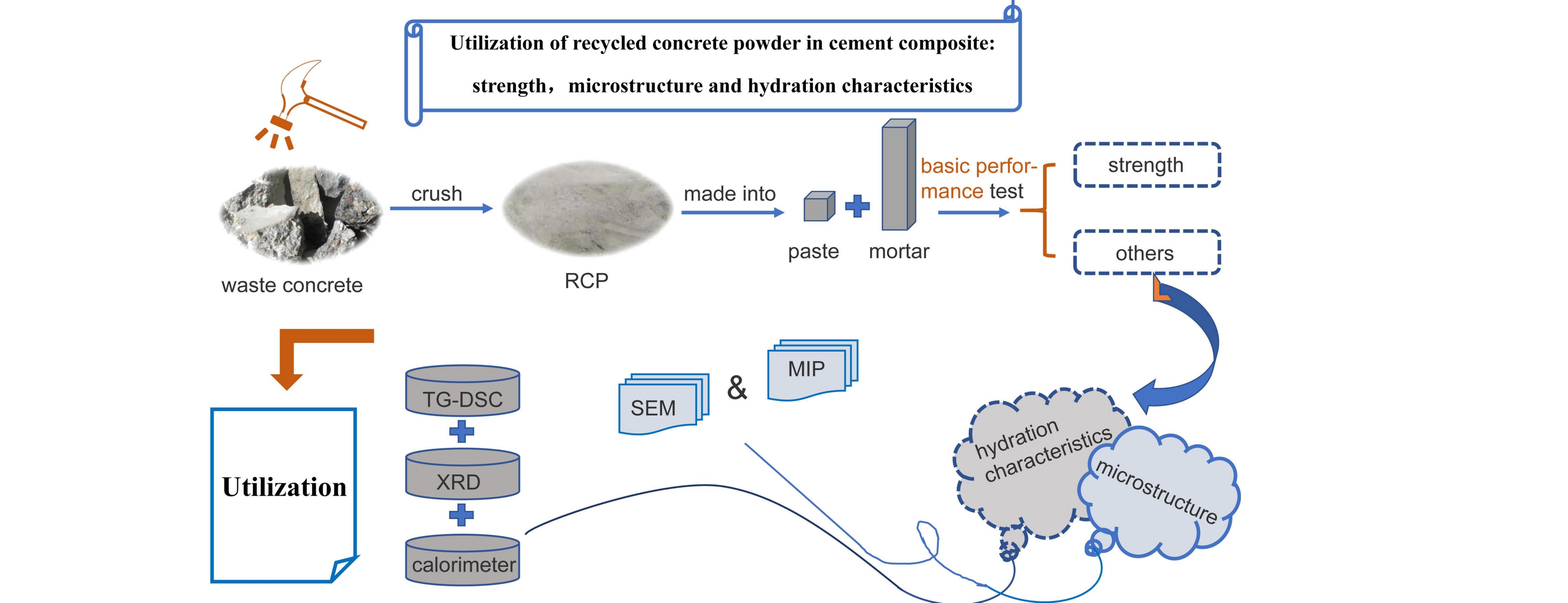 Open Access
Open Access
ARTICLE
Utilization of Recycled Concrete Powder in Cement Composite: Strength, Microstructure and Hydration Characteristics
1
School of Civil Engineering, Qinghai University, Xining, 810016, China
2
Qinghai Provincial Key Laboratory of Energy Saving Building Materials and Engineering Safety, Xining, 810016, China
* Corresponding Author: Ying Li. Email:
(This article belongs to the Special Issue: Recycled Concrete Towards a Sustainable Society)
Journal of Renewable Materials 2021, 9(12), 2189-2208. https://doi.org/10.32604/jrm.2021.015394
Received 16 December 2020; Accepted 01 February 2021; Issue published 22 June 2021
Abstract
Recycled concrete powder (RCP) is used more and more in cement-based materials, but its influence on the hydration process is still unclear. Therefore, this paper studied the influence of recycled concrete powder (RCP) on the hydration process of cement and provides a theoretical basis for the hydration mechanism of cement composite materials. The hydration heat method was used to systematically analyze the thermal evolution process of cement paste with or without RCP. Hydration products were identified using X-ray diffraction (XRD) and thermal analysis (TG–DSC). The pore structure change of cement pastes was analyzed by mercury intrusion porosimetry (MIP) method. The mechanical properties of mortar were also evaluated. Four recycled concrete powder (RCP) dosages, such as 10%, 20%, 30% and 40% are considered. The results indicate that with the increase of RCP content, the hydration heat release rate and total heat release amount of paste decreased, but the second heat release peak of hydration reaction advanced; the proportion of harmful pores and more harmful pores increases, the total porosity and the most probable pore size also increase; the fluidity and mechanical strength of mortar decrease, but the crystal type of hydration products does not change. When the content of RCP is less than 20%, it has little effect on the mechanical strength of mortar. When fly ash and silica fume are mixed, the fluidity difference of mortar decreases, and when the content of fly ash is the highest, the fluidity of mortar is the highest, which is 15mm higher than that of the control group. When RCP content is 15%, fly ash and silica fume content is 15% (FA:SF = 3:2), the hydration heat of the clean pulp is the highest among all the compounding ratios, and the hydration reaction is the most complete; the proportion of harmless pores increased by 9.672%, the proportion of harmful pores and more harmful pores decreased, and the compactness of material structure increased; the compressive strength and flexural strength of mortar reached 50.6 MPa and 9 MPa respectively, both exceeding those of control mortar.Graphic Abstract

Keywords
Cite This Article
Citations
 Copyright © 2021 The Author(s). Published by Tech Science Press.
Copyright © 2021 The Author(s). Published by Tech Science Press.This work is licensed under a Creative Commons Attribution 4.0 International License , which permits unrestricted use, distribution, and reproduction in any medium, provided the original work is properly cited.


 Submit a Paper
Submit a Paper Propose a Special lssue
Propose a Special lssue View Full Text
View Full Text Download PDF
Download PDF

 Downloads
Downloads
 Citation Tools
Citation Tools
